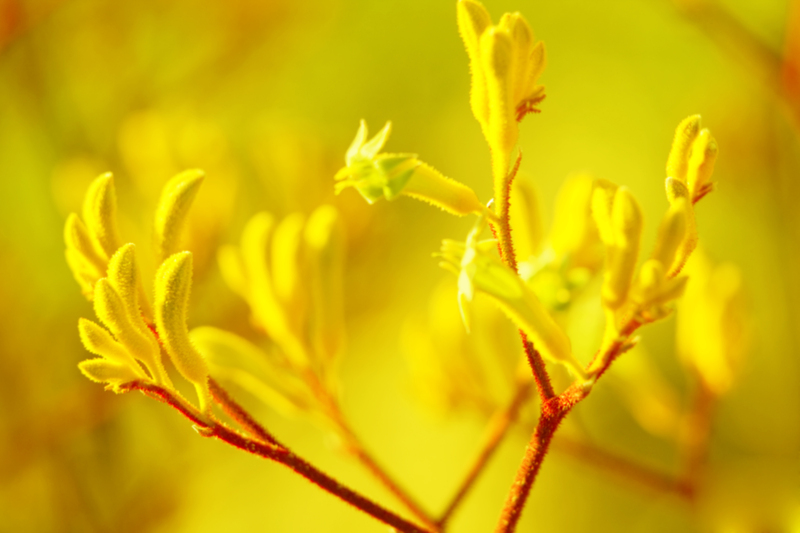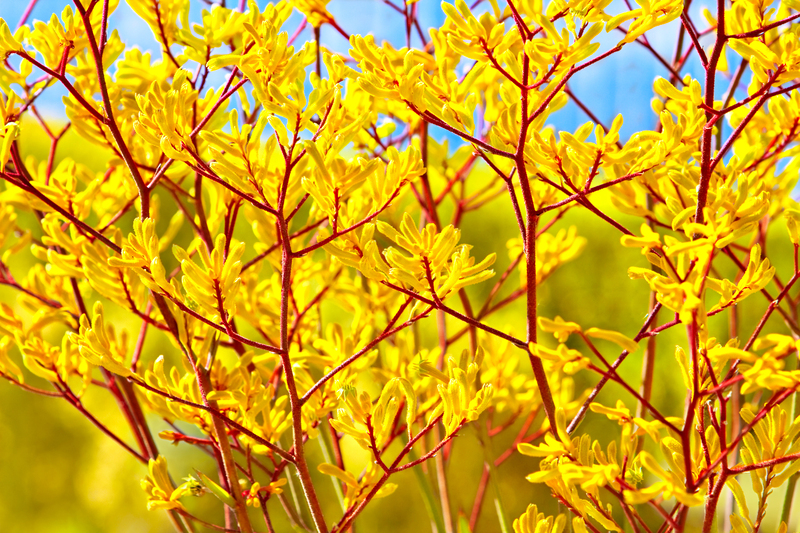Herb Garden Hacks: Grow Fresh Flavors All Year Round
Posted on 26/08/2025
Herb Garden Hacks: Grow Fresh Flavors All Year Round
Are you dreaming of a herb garden bursting with fresh flavors, regardless of the season? With the right tips and a touch of creativity, growing your favorite herbs throughout the year is well within reach. Herb garden hacks not only provide you with a steady supply of aromatic herbs but also add vibrancy to your living space and healthy options to your kitchen. In this comprehensive guide, discover the secrets of cultivating a thriving herb garden that stays lush and productive all year long.
Why Grow Herbs Year Round?
- Freshness at Your Fingertips: Enjoy immediate access to culinary classics like basil, parsley, and mint.
- Cost Savings: Cultivating your own herbs reduces grocery expenses.
- Improved Flavor: Fresh cut herbs elevate dishes more than store-bought dried versions.
- Therapeutic Benefits: Gardening lowers stress and enhances well-being.
- Sustainability: Homegrown herbs reduce packaging waste and food miles.

Choosing the Right Herbs for Year-Round Harvest
Some herbs are especially easy to keep going in any season. For a year-round herb garden, focus on these top performers:
- Basil - Thrives indoors with plenty of sunlight.
- Parsley - Hardy and adaptable to pots or garden beds.
- Chives - Durable and quick to regrow after cutting.
- Cilantro - Best for cooler months but can be succession sown.
- Mint - Vigorous and reliable in containers (to prevent spreading).
- Rosemary - Evergreen and resilient indoors or outdoors.
- Thyme - Low maintenance and aromatic year-round.
Pro Hack: Diversify Your Herb Selection
Plant a mix of leafy annuals (e.g., basil, cilantro) and hardy perennials (such as thyme, oregano, and mint) to ensure ongoing harvests, flavor variety, and visual interest.
Herb Garden Hacks for Every Season
1. Smart Indoor Herb Gardening in Winter
- Maximize Light: Place pots in a south-facing window or use LED grow lights for 12-16 hours daily.
- Right Temperatures: Most herbs prefer 60-75?F (15-24?C).
- Control Humidity: Use trays with pebbles and water, or run a humidifier to counteract dry winter air.
- Rotate Pots: Turn pots weekly for balanced growth and avoid legginess.
2. Spring Forward with Early Sowing
- Start Seeds Indoors: Begin basil, parsley, and others 6-8 weeks before the last frost, then transplant outside.
- Cold Frames & Hinged Lids: Protect tender herbs outdoors early for a head start.
- Succession Planting: Sow new seeds every 3-4 weeks to maintain productivity.
3. Summer Abundance
- Pinch Regularly: Frequent harvesting of basil, oregano, and mint encourages bushier growth.
- Mulch: Mulching keeps soil moist and roots cool, especially during heatwaves.
- Self-Watering Containers: Use pots with reservoirs to maintain consistent hydration.
4. Autumn Preservation
- Cut and Propagate: Root cuttings of basil, rosemary, or mint in water on your windowsill for a fresh indoor supply.
- Dry or Freeze: Harvest and dry extra herbs, or freeze them in olive oil cubes for winter use.
- Transition Indoors: Bring potted perennials inside before frost for continued harvests.
Optimizing Space: Indoor and Outdoor Herb Garden Hacks
Container Gardening Secrets
- Choose the Right Pot: Ensure containers have drainage holes to prevent root rot.
- Go Vertical: Use hanging planters, tiered shelves, and wall-mounted pockets to maximize space.
- Companion Planting: Mix compatible herbs, like basil and parsley, in a single pot for beauty and efficiency.
Windowsill Herb Garden Tips
- Maximize Sunlight: South or west windows deliver the most light for lush growth.
- Rotate Regularly: Turn pots toward the window to prevent one-sided growth.
- Consider Grow Lights: Supplement with inexpensive LED grow bulbs in darker months.
Outdoor Herb Garden Tricks
- Raised Beds: Provide fabulous drainage and warm faster in spring.
- Border Planting: Ring flower beds with low-growing herbs like thyme or chives for aesthetic and culinary benefits.
- Pots on the Patio: Keep pots mobile to follow the sun or shelter from storms.
Soil, Water & Nutrient Hacks for Lush Herbs
1. Perfect Soil
- Well-Draining Mix: Use a blend of potting soil, compost, and perlite or sand for roots that breathe.
- Shake It Up: Repot yearly to refresh nutrients and aerate densely packed soil.
2. Water Wisely
- Less is More: Water deeply but allow soil to dry out slightly between waterings. Avoid soggy roots.
- Morning Routine: Water early to allow leaves to dry, reducing mildew risks.
3. Organic Feeding
- Compost Tea: Apply liquid compost or seaweed solution monthly for robust growth.
- Go Easy on Fertilizer: Too much nitrogen can reduce flavor intensity - stick to gentle, organic feeds.
Pest and Disease Control the Natural Way
- Encourage Beneficial Insects: Plant dill or coriander flowers to attract ladybugs and lacewings.
- Neem Oil Mist: Use a mild neem solution to deter aphids, spider mites, and whiteflies - safe for food plants.
- Inspect Often: Catch issues early by checking under leaves and around stems weekly.
- Companion Planting: Add marigolds near herb beds to repel pests and attract pollinators.
Propagation Hacks: Multiply Your Favorite Herbs
Grow From Cuttings
- Soft Herbs: Snip 4-inch pieces of basil, mint, or oregano and root them in water for quick results.
- Woody Herbs: For rosemary and thyme, dip stem tips in rooting hormone before potting in moist soil.
Layering & Division
- Layering: Bend a low stem of thyme or oregano to the ground, anchor with a pin, and cover with soil until roots form.
- Division: Split mature chives, mint, or lemon balm clumps in spring or fall to refresh overcrowded pots or share with friends.
Top Storage Hacks for Preserving Fresh Flavors
Refrigeration
- Moist Paper Towel: Roll cut herbs in a damp towel and seal in a bag for up to a week's freshness.
- Mason Jar Method: Store herb stems upright in a glass with an inch of water, covered loosely with a bag.
Freezing Wonders
- Ice Cube Trays: Chop and pack fresh herbs into trays, cover with olive oil or water, and freeze for instant flavor boosts in recipes.
- Flash Freezing: Freeze leaves on a tray, then transfer to airtight bags for easy grab-and-go portions.
DIY Herb Infusions
- Herb Oils: Steep rosemary, thyme, or basil in olive oil for ready-to-use gourmet drizzle.
- Herbal Vinegars: Combine fresh herbs with vinegar for homemade salad dressings and marinades.
Expert Tips: Troubleshooting Common Herb Garden Issues
- Yellowing Leaves: Often a sign of overwatering--check drainage and let soil dry.
- Leggy Growth: Increase light (move closer to window/grow lamp) and pinch back to stimulate bushier plants.
- Pest Buildup: Clean windowsills and containers monthly; spray neem oil as needed.
- Flavor Fading: Avoid over-fertilizing and routinely harvest to maintain robust flavors.
Creative Ways to Use Herbs from Your Year-Round Garden
- Fresh Pesto and Chimichurri: Blend basil, parsley, or cilantro with olive oil, garlic, and nuts for instant sauces.
- Infused Water: Add mint and lemon balm to water for a refreshing beverage.
- Herbal Butter and Cheese Spreads: Mix chopped herbs into softened butter or cream cheese for a gourmet touch.
- Savory Teas: Steep thyme, rosemary, or lemon verbena for calming, aromatic drinks.
- DIY Skincare: Use fresh mint, chamomile, or calendula for homemade masks and toners.

Frequently Asked Questions About Growing a Year-Round Herb Garden
Can all herbs be grown indoors year round?
Many popular herbs can thrive indoors if provided with ample sunshine (or grow lights), but some--like cilantro and dill--prefer cooler temperatures and may bolt if it's too warm. For continuous supplies, succession planting every few weeks is best.
How do I keep basil alive in winter?
Basil hates cold drafts and low light. Keep near your brightest window or beneath a grow lamp, water sparingly, and fertilize lightly every 4-6 weeks to mimic summer conditions.
Should I fertilize indoor herbs?
Light monthly feeding with diluted organic fertilizer or compost tea will keep your herbs healthy, but avoid excess feeding, which can reduce flavor intensity.
Conclusion: Start Your Year-Round Herb Garden Today
With these herb garden hacks, you can savor garden-fresh flavors, enhance your culinary creations, and decorate your home with beautiful green herbs throughout the year. Whether you're a seasoned gardener or a kitchen counter enthusiast, there's an easy hack here for every step of your year-round herb gardening journey. Make use of smart positioning, creative containers, proper feeding, and natural pest controls to unlock a world of flavor and freshness at your fingertips--no matter what the weather brings! Happy growing!

